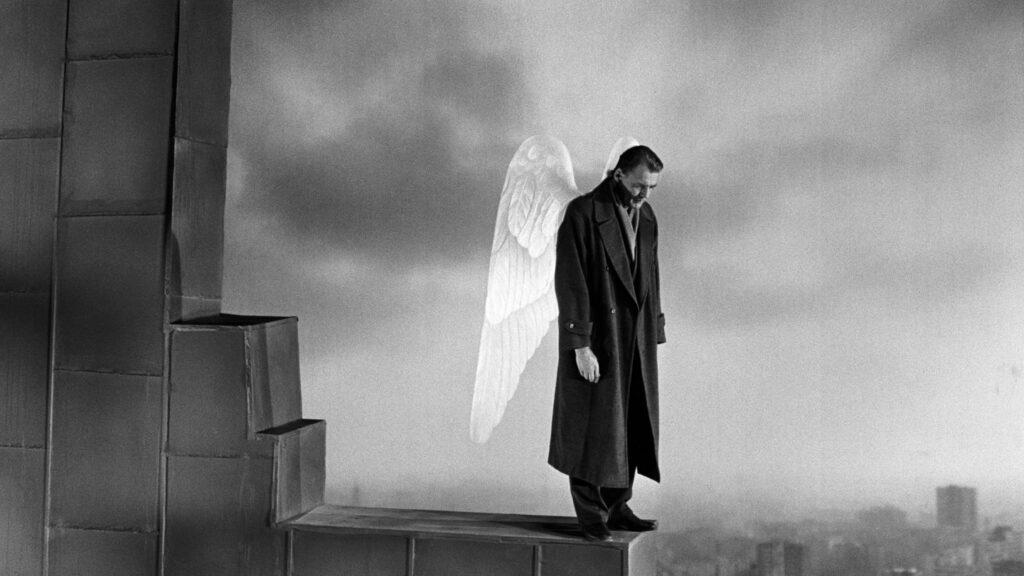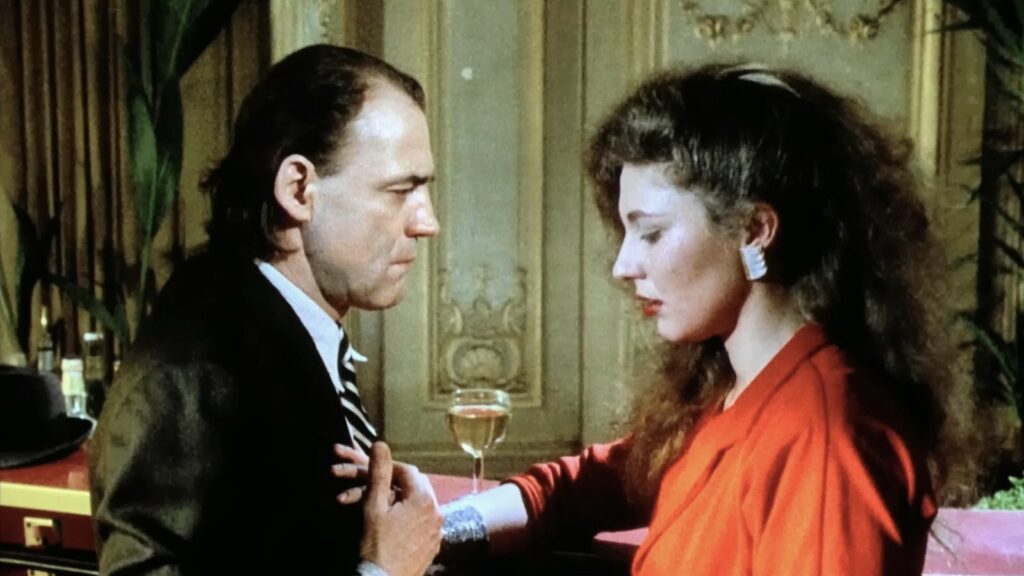
Wim Wenders’ 1987 Wings of Desire is a poetic homage to post-war Berlin before the fall of the Berlin Wall. The film follows two invisible angels, played by Bruno Ganz and Otto Sander, that wander around the scarred city: listening, observing, and recording the innermost thoughts of its shattered citizens. Although its lyricism is often criticized as obtuse, typical for what is characterized as a “B-film” (unscripted and having a loose production structure), I find that its obscurity enhances the film’s motif. Its attempts to distance the audience in order to beseech greater contemplation reminds one of Bertolt Brecht. Through “Brechtian” techniques and devices associated with Epic Theater, Wenders is able to prompt the audience to live their lives more fully—something only the best of cinema is capable of.
Verfremdungseffekt, also known as the distancing effect, was developed by Bertolt Brecht, who is best known for pioneering Epic Theater. Brecht found that the plays of his time were unchallenging and far too easy to sit through. He posited that being emotionally involved with the characters onscreen often hindered the audience’s ability to interact with the subject matter on an intellectual level. Naturalistic theater, at its height, was a mirror to society; Brecht felt that theater, at its height, should be “a hammer which shapes it.” And so Epic theater was born. Brecht’s solution was to distance the audience through Verfremdungseffekt, which used many different techniques to alienate the audience, allowing them to remain dialectic in the absence of emotional investment.
Throughout Wings of Desire, we are subject to a narration of the thoughts of Berlin’s people. As we follow the two unseen angels, Damiel and Cassiel, hopes, dreams, and fears voice over the torn scenery of the city. Narration is among the many devices Brecht employed to alienate the audience, discovering that it often reminded the audience that what they were witnessing was a presentation of a story, thus keeping them at bay. I believe that in Wings of Desire, Wenders brings the device to a zenith. We jump, sometimes within seconds, from one narrator to another: person to person, undeciphered story to the next, a barrage of symbolism that is at times, esoteric. We are unable to latch onto any character for long before we are thrown into the mind and story of another. As we watch, we often forget if there is a protagonist or any character of note; all we can recognize is Berlin and its people, a collective menagerie of burdens, desires, and convictions. The film requires attentiveness like no other, and even as it is fully dissected over the course of several viewings, one will still feel as if there are stones left unturned.
As the film progresses, the audience is again reminded of the two angels amidst the chaos: arguably the only characters to form an emotional connection to, though their divine nature makes it difficult to do so fully. A narrative begins to emerge: the arrival and subsequent interactions of Peter Falk (playing a former angel) with Damiel revealing the latter’s envy of human mortality. As he curses the dullness of eternity and develops an attraction to Marion, a circus trapeze artist, the audience comes to realize Damiel’s yearning to exist as humans do—to eat and drink, feel tired after a long day of work, have a fever, and feel the breeze in his hair.
In a pivotal scene of the film, Wenders widens the chasm between audience and character with arguably one of the most “justified” camera movements in history. The aforementioned shot takes place in a library where Damiel’s discontent is first made known to us. Angels stare directly into the camera as the point-of-view shot turns into a shot where the supposed viewer, Damiel, walks into the frame. In other words, we see through the eyes of Damiel, before he suddenly appears in the frame himself. Here, Wenders uses the Brechtian device of breaking the fourth wall to distance the audience from Damiel, ensuring that when he eventually crosses the threshold of immortality, we do not take part in his mirth from coffee or his rapture from freezing. This in turn encourages the audience not to merely enjoy these things vicariously through Damiel, but to wake up, so to speak, as Damiel has done, and enjoy the trivial yet defining experiences that accompany our mortality.

Another technique of Verfremdungseffekt in Wings of Desire is the change of color that takes place towards the end of the film. Though it may only be Brechtian in the sense that it reminds the viewer once again that they are watching a film, when coupled with its cultural milieu, the transition from black and white to color in Wings of Desire is a powerful device in precipitating intellectual and social change. The monochrome, seemingly impenetrable barrier that stood between mortality and immortality; angels and humans; Damiel and Marion disappears, with vibrant color and lovers united taking its place—likely a metaphor for the Wall that stood dividing east from west in the city Wenders himself adored. Indeed, two years after the film’s release, a series of revolutions across Europe culminated in the fall of the Berlin Wall.
Wings of Desire is a contemplation of mortality, surveying humanity in a way that has rarely been done before. Its premise has given it a limitless canvas: one that isn’t constrained by a narrative, but is instead enhanced by the marriage of directorial influences with a resoundingly impactful story. Through the use of Brechtian techniques, Wenders stops the audience from immersing in the emotional experiences of characters such as Damiel, inspiring deeper observation and a newfound desire to pursue those same experiences ourselves.